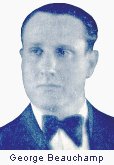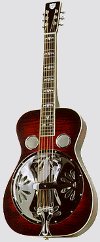Electric Guitar History
The Creation Of An Icon
Knowing about electric guitar history won't make you a better player. It will, however, give you a better appreciation for the electric guitar and how and why it became the instrument it is today. We are going to look at the history of the electric guitar in terms of its invention and development and some of the key figures in the electric guitar history that brought the electric guitar to where it is today. We are not going to try to cover the history if each guitar brand. That will be looked at in the Brands section of the site when we look at the individual guitar brands and their development.
The Beginning...
In the beginning of the twentieth century, the guitar had
already proven itself to be a noteworthy instrument. Originally considered to
be basically a folk instrument, the guitar had been established by formidable
players such Andres Segovia as a serious performance instrument.
Capable of self-harmonization and vocal accompaniment, the guitar became a popular
instrument in many forms of music. The guitar was originally used as an accompanying
instrument mostly used for rhythm or melodic accompaniment. In the '20's and '30's,
however, the guitar was over powered by the brass sections popular in Swing, Big Band and
Jazz music. Without some way to increase the volume of the instrument the guitar was overpowered.
The acoustic guitar simply could not compete with the volume levels of the other instruments. Not even
the addition of steel strings was sufficient to allow the guitar to compete with other instruments.

During this time two Los Angeles musicians George Beauchamp and John Dopyera
began trying to find ways of creating louder guitars. Dopyra eventually hit upon
the idea to use metal plates as a resonator to increase the volume of the acoustic guitar.
This increased the volume by 3 to 5 times that of a traditional acoustic but was still not
sufficient to compete with brass instruments, etc.

30 Day FREE TRIAL!







New! Comments
Have your say about what you just read! Leave me a comment in the box below.